Top 10 Most Beautiful Historical Sites in Morocco
Morocco is Africa's gateway and a country of stunning diversity, with ancient towns, mountain ranges, enormous deserts, and great hospitality. The country's ... read more...largely Arab and Berber population reflects a country with a turbulent history. Palaces, mausoleums, minarets, and citadels are just a few of the sights that visitors visiting the 'Maghreb' - the Arab West – can expect to see. Here are the top most beautiful historical sites in Morocco.
-
The Citadel of Ait Ben-Haddou, located just outside Ouarzazate in southern Morocco, is a magnificent example of North African pisé clay construction dating back hundreds of years.
Although most of the buildings and maze-like alleyways you see now are from the 17th century, At Ben-Haddou was an important commercial town that linked ancient Sudan with Marrakech on one of several trans-Saharan trade routes.
Since 1987, At Ben-Haddou has been a UNESCO World Heritage Site, with six kasbahs and about fifty ksours (individual kasbahs) constructed of rammed earth, adobe, clay bricks, and wood. It was a fortified settlement with residences ranging in size from tiny to castle-like, common areas and associated buildings, a public square, a mosque, Muslim and Jewish cemeteries, and caravansaries. "It is an amazing ensemble of buildings, giving a complete vista of pre-Saharan earthen construction techniques," according to UNESCO. These reviews completely prove that The Citadel of Ait Ben-Haddou is one of the Most beautiful historical sites in Morocco. However, because natural materials are used, buildings and structures must be maintained on a regular basis or risk being destroyed by the weather.
At Ait Ben-Haddou, time seems to stop still, and when the citadel is devoid of tourists, it feels as if you've stepped back in time, into another planet. Ait Ben-Haddou is a favorite filming location, and it's easy to see why. Ait Ben-Haddou was featured in Gladiator, Jewel of the Nile, Prince of Persia: Sands of Time, and Lawrence of Arabia, among many others, long before it became a star on Game of Thrones (as Yunkai, the Yellow City).
Location: Morocco.
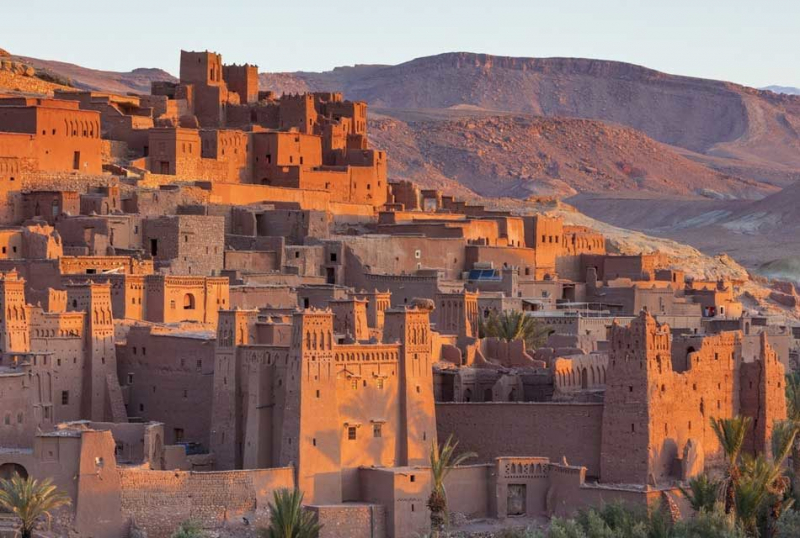
Photo: friendlymorocco 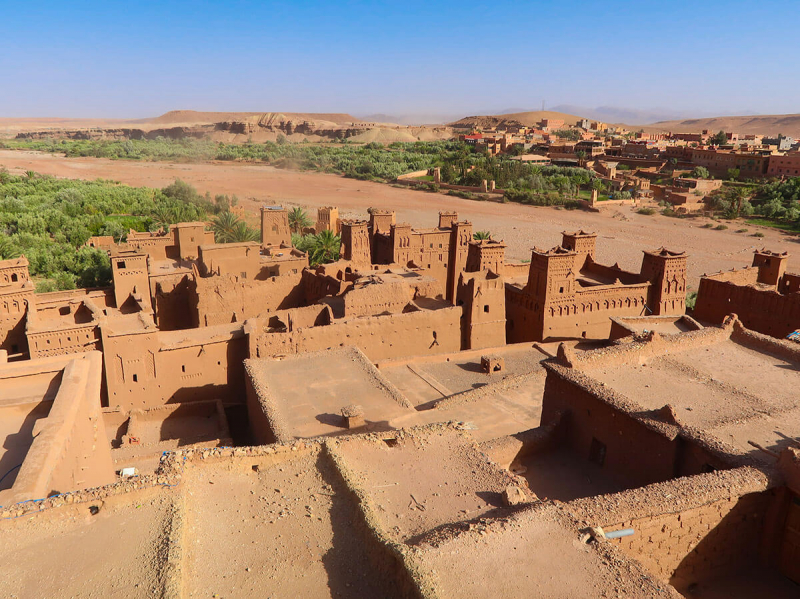
Photo: theglobetrottingdetective -
The Hassan Tower, also known as the 'Tour Hassan' in French, is a majestic reminder of a mosque that was never completed in Rabat, Morocco.
The Hassan Tower is a 140-foot red stone minaret constructed during the reign of Yacoub El Mansour, an Almohad Dynasty ruler who reigned from 1184 AD. The construction of the Hassan Tower began in 1195 AD, with the goal of creating the world's largest mosque. From Al-Andalus in Spain to Marrakech and Alexandria, the buildings were influenced by a range of Muslin and Moorish styles.
However, only four years had passed since the sultan's death, and the project had perished with him. The mosque's foundations (348 columns and the beginnings of its walls) were demolished in a 1755 earthquake.
The structure, together with the nearby tomb, is a UNESCO World Heritage Site and is a must-see landmark in Rabat. Outside, look for the beautiful ornate sekba panels, and don't miss the wonderfully attractive pillar stumps. The best time to visit is at dawn or dusk, when the light paints a particularly gorgeous color over the complex.Location: Rabat, Morocco.
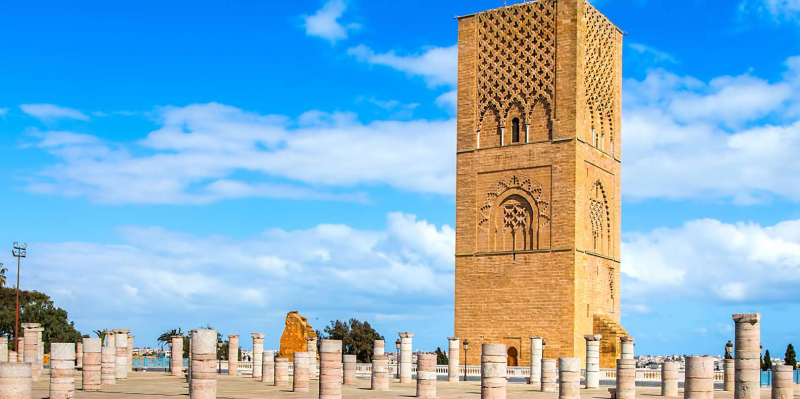
Photo: getyourguide 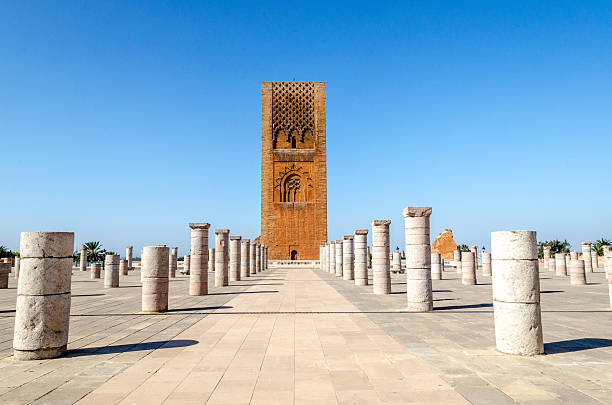
Photo: istock -
Volubilis, a UNESCO-listed ancient Roman monument in Morocco, contains large remains dating back to the first century BC. Volubilis was already a thriving town when the Romans arrived in about 25 BC, under the reign of Juba II, a Berber prince assigned as the region's governor by Emperor Augustus. Juba II was married to Anthony and Cleopatra's daughter.
Volubilis' occupants were a diverse group of people who included Africans, Syrians, Spaniards, and Jews, among others, and totaled up to 20,000 people at its heyday.
Visitors can observe a variety of public structures, olive mills (the economic backbone of ancient Volubilis), sophisticated hot baths, residences, temples, and defensive walls, all of which are adorned with beautiful mosaics.
The Triumphal Arch of Caracalla, built for the Roman Emperor Caracalla after his death in 217 AD, is one of Volubilis' most famous buildings. The Triumphal Arch of Caracalla is in excellent condition, and despite the loss of its top half, it remains an extraordinarily spectacular building and a must-see for any history buff. Climb the nearby hillside for spectacular views of the area.
The site is open from sunrise to night, and tour guides can be hired at the entry. By no means has the entire site been explored; only about 20 hectares, mostly in the north, have been revealed. A tiny onsite museum houses some Volubilis antiquities, although the majority of them are housed at Rabat's National Archaeology Museum.
Location: Meknès Prefecture, Fès-Meknès, Morocco
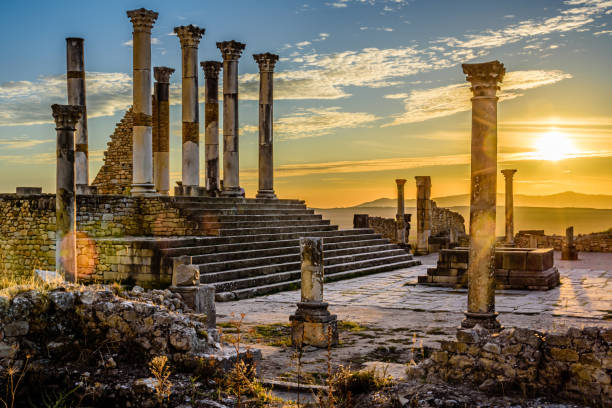
Photo: istock 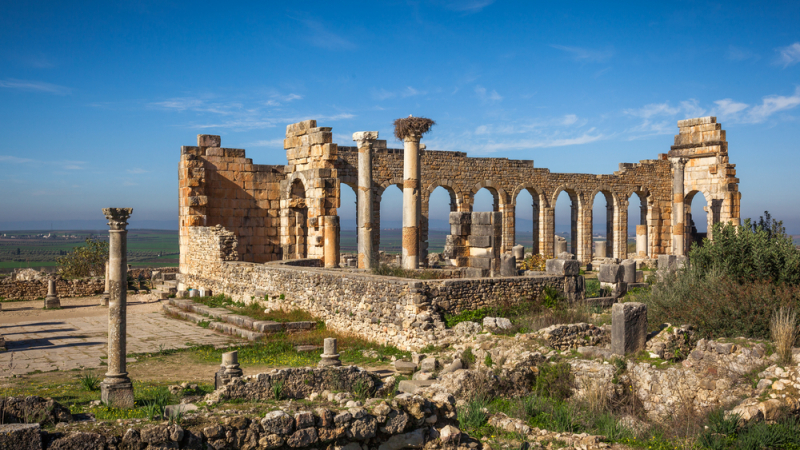
Photo: theculturetrip -
The Moroccan city of Mogador (named after the Muslim saint Sidi Mogdoul, who was buried there in the Middle Ages) has a long and illustrious history extending back over two millennia. The Atlantic coastal city of Essaouira, pronounced 'essa-weera,' is full of small alleys with the intense fragrance of spices, thuya wood, and sea air, indicating that you are in an ancient North African village.
Essaouira, a UNESCO World Heritage Site, was founded in the 5th century BC by Hanno the Navigator, a Carthaginian explorer, and served as a port, a center for the manufacture of purple dye (which colored the purple stripe in Imperial Roman Senatorial dress), and a garrison town for the next two thousand years, but the Essaouira you see today is largely thanks to Mohammed III, who built the fortifications and walled the beautiful town in.
As you walk throughout town, you'll notice influences from Portuguese, French, Berber, Dutch, Jewish, and Muslim cultures, and the town's population was formerly split 50/50 between Jews and Muslims. The city is situated at the intersection of two tribes (the Haha Berbers and the Arab Chiadma), which adds to the city's diverse cultural blend. Today, this colorful city is considered one of the most beautiful historical sites in Morocco.
The fishermen and artisan woodworkers around the harbor are doing what they've always done, and the art scene is as vibrant as it's always been, but if you're a Game of Thrones fan, Essaouira is and will always be Astapor, home of the Unsullied and the southernmost of Slaver's Bay's three city-states.
Location: : Marrakesh-Safi, Morocco.
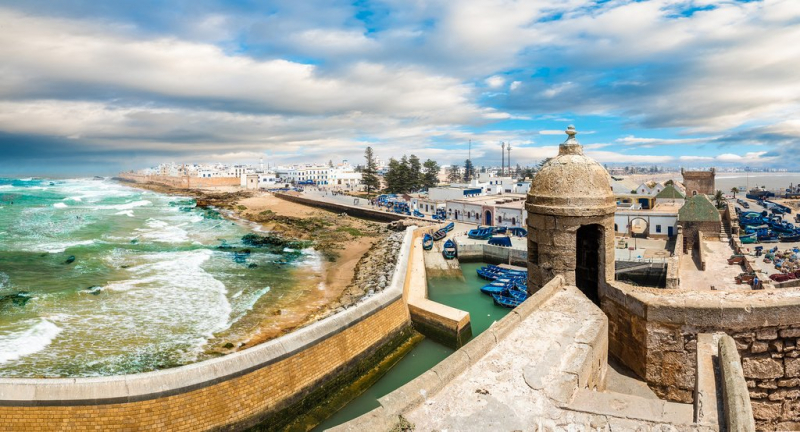
Photo: kimkim 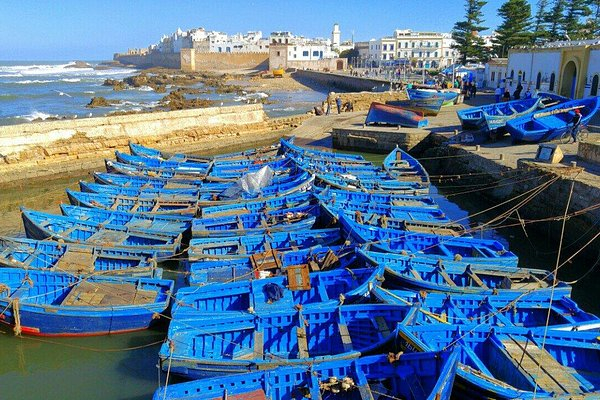
Photo: tripadvisor -
The Saadian Tombs in Marrakesh are the final resting sites of about sixty Saadi Dynasty monarchs and members, including Sultan Ahmed El Mansour (the dynasty's sixth sultan) and his family.
The Saadian dynasty controlled Morocco from 1549 to 1659, and its mausoleum is supposed to have been constructed in the 14th century. The tombs were extensively extended, restored, and magnificently painted under the reign of Ahmed el-Mansour in 1578, owing to the fact that his father was buried here in 1557. The tombs were lavishly decorated with imported Italian marble and the finest artisans.
Over 166 of Saadi society's most significant individuals were buried here, including el-Mansour and his immediate family, as well as many other royal princes, chancellors, and councilors. The closer these persons were buried to the sultan, the more significant they were.
Moulay Ismail erected a high wall around the tombs, allowing only a narrow route to access them. As a result, they were completely forgotten about until 1917, when they were uncovered during a French aerial survey of the area. The tombs were meticulously renovated after that and subsequently opened to the public.Location: Rue de La Kasbah, Marrakesh 40000, Morocco.
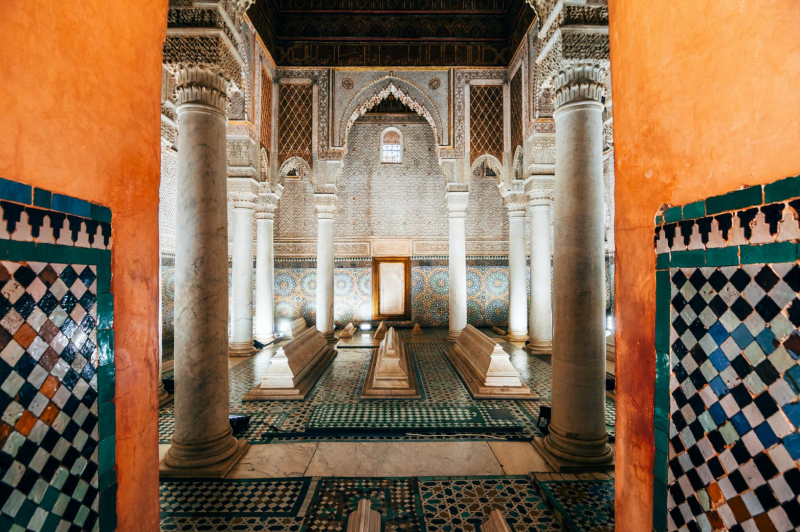
Photo: lonelyplanet 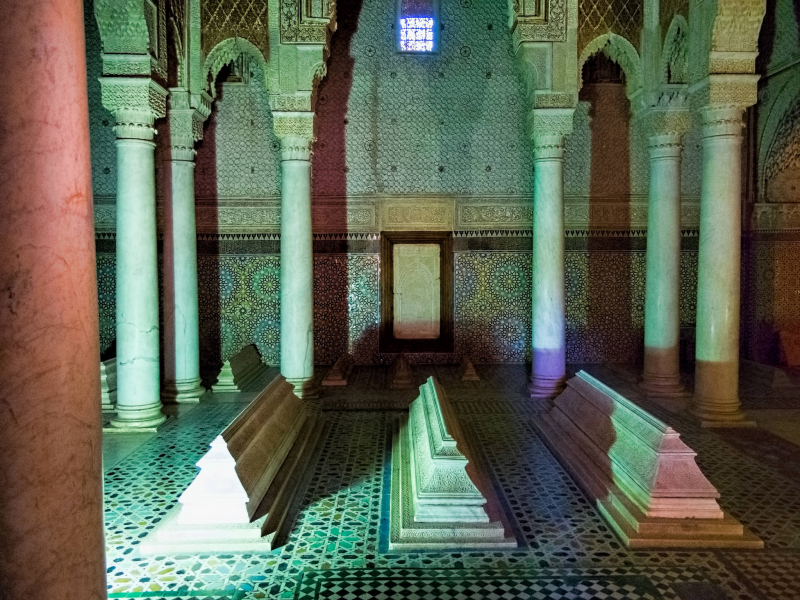
Photo: theculturetrip -
El Badi Palace was once the magnificent royal palace of the sultan Ahmad al-Mansur of the Saadi Dynasty, located in Marrakesh, Morocco.
Sultan Ahmed Al Mansour commissioned the Badia Palace shortly after his accession in 1578; it is thought to have been largely completed by the early 1580s, but Al-Mansour continued to embellish and decorate the palace for at least another 20 years with the finest produce from Europe, North Africa, and the Middle East. El Badi was an opulent hotel complex with about 350 rooms, patios, gardens, and a big pool. The Badi Palace was one of the most remarkable of its kind in the world at the time, and while it's difficult to imagine today, the reflecting pools and vestiges of the subterranean gardens give a glimpse of its previous grandeur and majesty.
The palace's ruins are open to tourists today, including the underground chambers, which have various exhibitions — there's a full permanent exhibit looking at the conditions for slaves and captives who would have lived in these darkly fascinating subterranean rooms. The subterranean gardens and the Koubba el Khamsiniyya or "main hall," the Koutoubia minbar (complete with Cordoban artisans' gold and silver calligraphy), and the Khayzuran Pavillion, which hosts modern art exhibitions, are also highlights.
Location: Marrakesh, Morocco.
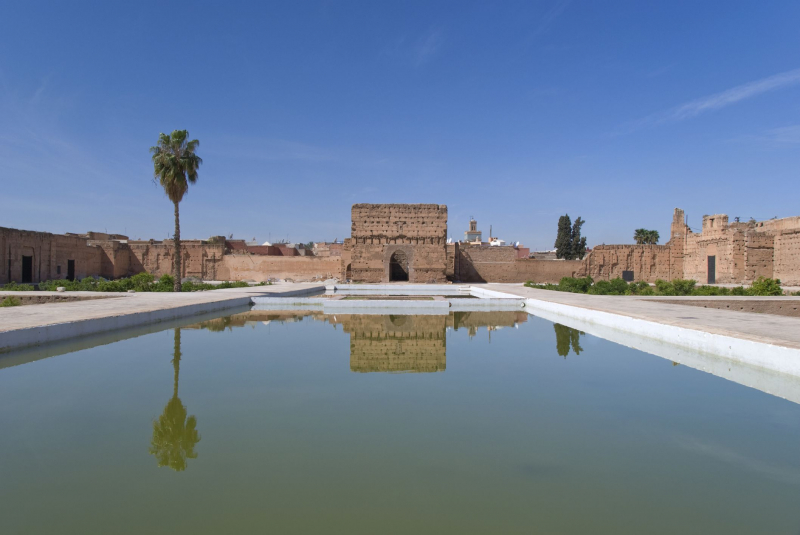
Photo: tripsavvy 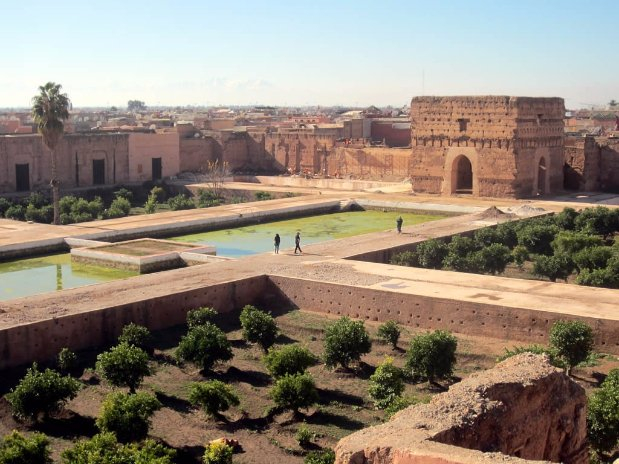
Photo: riad-chamali -
The stately tomb of one of Morocco's monarchs and his two sons is the Mausoleum of Mohammed V in Rabat.
The Mausoleum of Mohammed V is a white edifice with green tiles that was commissioned by King Hassan II in 1962 and finished in 1971. The tomb is elaborately decorated on the inside and features a plethora of traditional artwork. It was created by Vietnamese architect Cong Vo Toan to evoke a sense of Moroccan identity while also paying homage to Moroccan artisans' superior skill.
Traditional Moorish arches, white marble, and the omnipresent sekba pattern prevalent throughout Morocco are used in the design. The rectangular open-sided pavilion to the west was built as a museum for the Alouite dynasty, and the mosque in the middle was built purposefully low so that the surrounding structures could be seen.
The Mausoleum of Mohammed V is also the ultimate resting place of King Hassan II and Prince Abdallah, Mohammed V's two sons, in addition to its namesake.
The tomb complex is open from sunrise to night and is pretty impressive. Visitors are encouraged to dress respectfully, as are the royal guards, who wear dress uniforms (long clothes, covered shoulders, and ideally a headscarf for women). A gallery allows visitors to see the mausoleum from above. The Hassan Tower, which is located right behind the mausoleum complex, is a must-see.
Location: 25FH+3C2, Rabat, Morocco.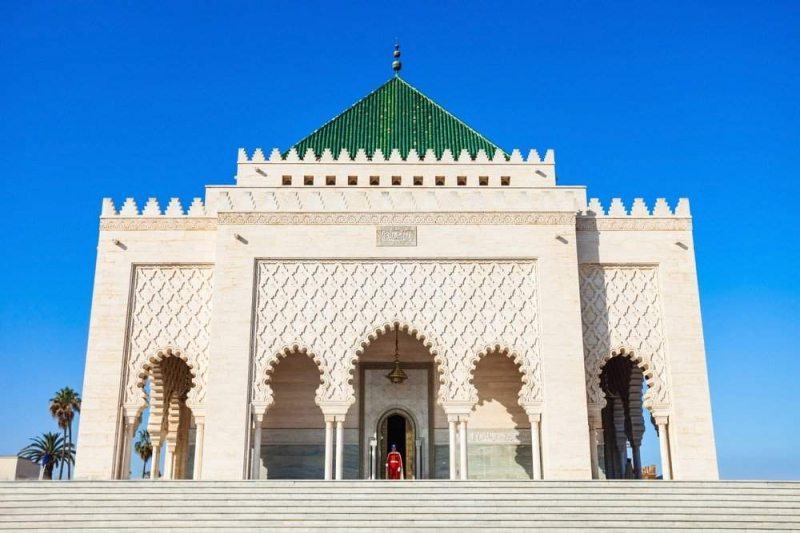
Photo: thinkmorocco 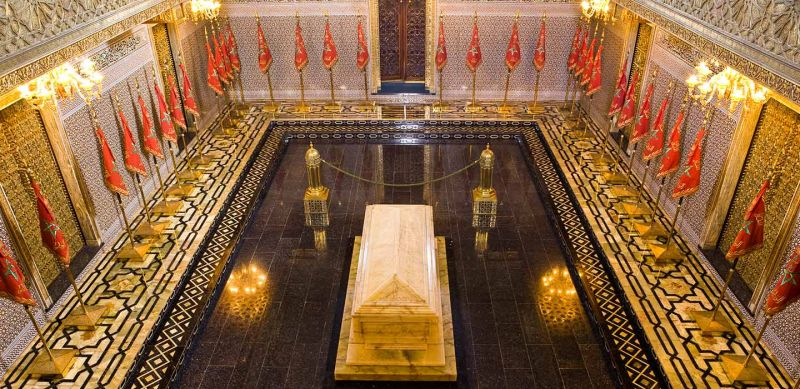
Photo: memphistours -
The Kasbah-town of At Ben-Haddou, one of the world's best examples of North African pisé clay building dating back a thousand years, is located in Ouarzazate, which is a Berber term meaning 'without noise' or 'without confusion.
The village was a minor but strategically important crossing point for traders from all over Africa wanting to expand their markets into northern Africa and Europe, connecting ancient Sudan with Marrakech. During the French colonial administration, Ouarzazate grew significantly, becoming a larger garrison town and administrative hub, as well as a customs and commerce post. The film industry took over once the French protectorate left in the 1950s, and it hasn't looked back since.
Ouarzazate is one of the most well-preserved Moroccan cities we've all seen in a thousand films. The Atlas Studios in Ouarzazate — the world's largest film studio complex – has been used to recreate settings as diverse as ancient Rome, Tibet, Egypt, Somalia, and dozens of Middle Eastern locations, and is informally known as 'Ouallywood'. Lawrence of Arabia was filmed in the adjacent Ait Ben-Haddou in 1962, and since then, the world's film location scouts have been semi-permanently based in Ouarzazate.
The region has quickly evolved since the film industry boom, and today contains hotels, restaurants, stores, residences, and public spaces, as well as a plethora of local businesses that rent cars, motorcycles, and even camels, ensuring that your trip into the heart of the Sahara is well taken care of. It may not be as picturesque as other adjacent towns, but it is utilitarian and a little more upscale, as well as an ideal base.
Location: : Drâa-Tafilalet, Morocco
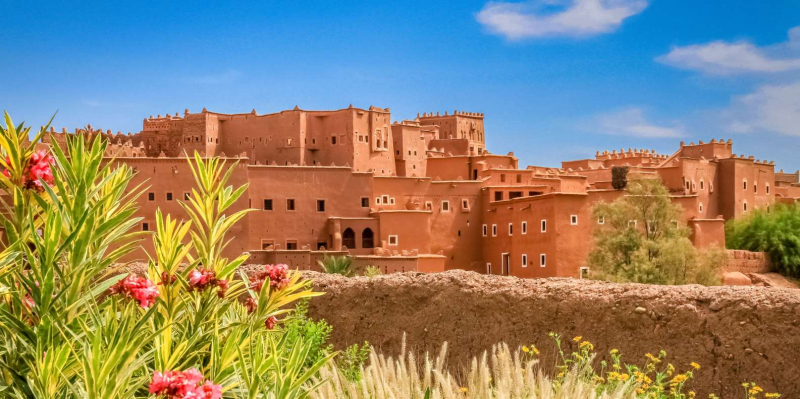
Photo: getyourguide 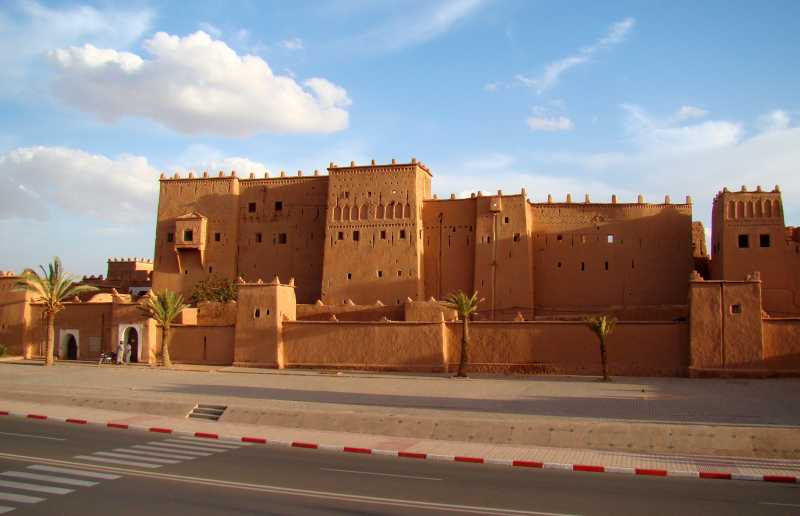
Photo: wikipedia -
Moulay Ismail's Mausoleum in Meknes is where one of Morocco's most renowned sultans is buried.
Moulay Ismail was the monarch of Algeria from 1672 to 1727 and was a member of the Alaouite Dynasty. He made Meknes his capital, breaking with custom, and launched on a series of large construction projects.
The sultan oversaw the early construction of his tomb, which was built by numerous slaves and criminals. Moulay Ismail's Mausoleum is a good illustration of the sultan's grandeur in architecture. Rooms with exquisite tiling and plaster walls ornamented with valuable things such as clocks donated to the sultan by his friend, the French king, Louis XIV, are built around large courtyards and fountains. This project is considered as one of the most beautiful historical sites in Morocco.
Moulay Ismail, together with one of his (five hundred) wives and two of his (eight hundred) children, were buried in the tomb. Sultan Mohammed V refurbished and opened the mausoleum to the public in the twentieth century. The tomb complex is undoubtedly Meknes' most important attraction, and it is well worth a visit. Non-Muslims are not permitted to visit the tomb itself, however they are welcome to explore the entry hall and front courtyards. You should dress modestly, with ladies covering their heads if possible.
Location: Meknes, Morocco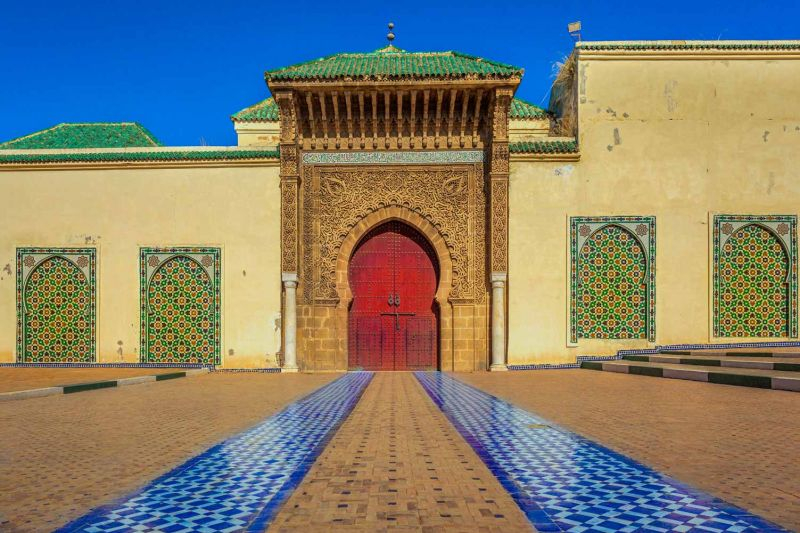
Photo: memphistours 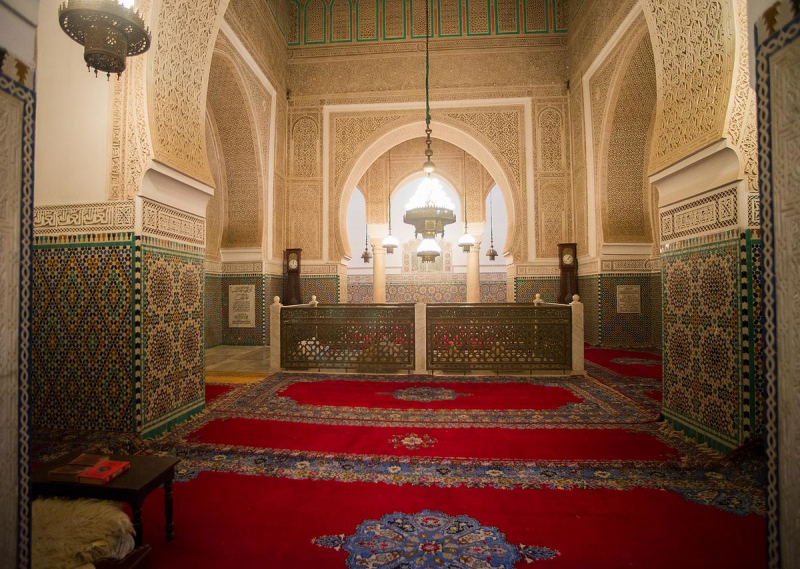
Photo: wikipedia -
In the late nineteenth and early twentieth century, the powerful El Glaoui family practically governed much of the surrounding territory from Telouet Kasbah in Morocco. The kasbah was built in 1860 by the powerful El Glaoui family, and it took 300 artisans and workers about 5 years to build. The castle is ornately decorated with fusions of Andalusian and Berber patterns, including stucco, painted cedar, and zellige tiles.
Shortly after, the Kasbah was abandoned due to its association with Thami El Glaoui. It is now a somewhat degraded version of its former splendor, with the property being administered by a local co-operative and tourists paying a small entrance fee. The ruins of this stronghold, which lies on the old caravan route from Marrakesh across the Atlas Mountains, can still be seen today. Despite the fact that the complex is beginning to show signs of wear, there is still a much to see, and many of the more ornate embellishments are still visible.
Location: Telouet kasbah, P1506, Telouet, Morocco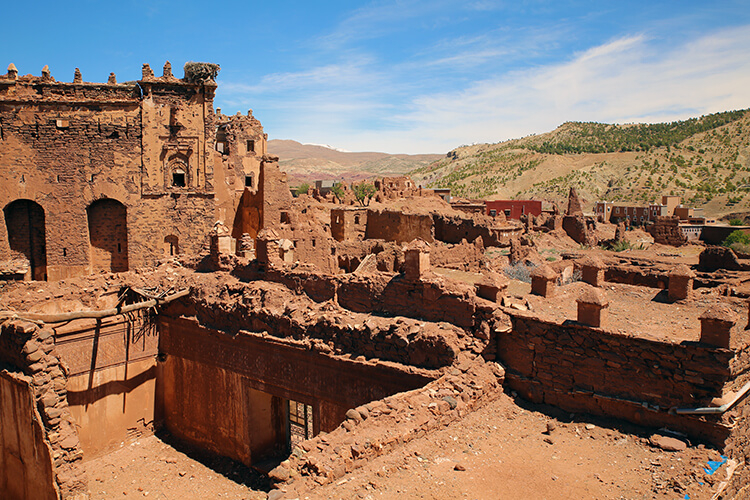
Photo: luxeadventuretraveler 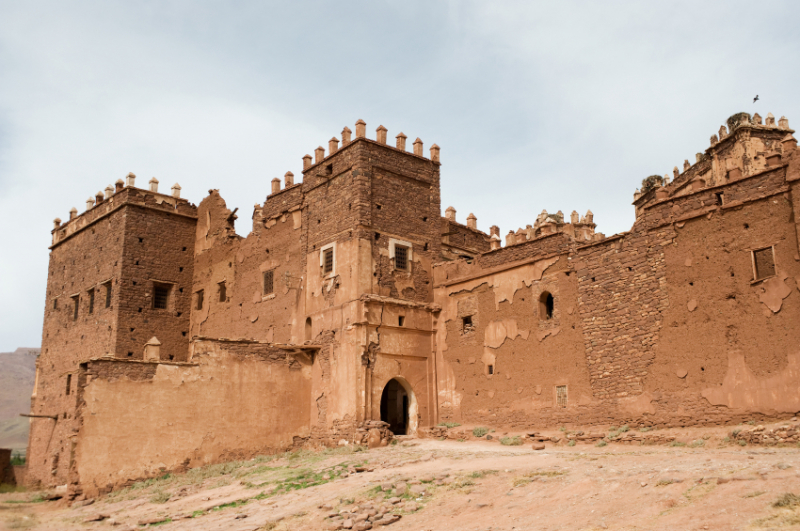
Photo: wildmorocco































